You can mark sections of text that interest you,
which will be available through a unique link in the address bar of the browser.
Visually about the processor plans of Intel and AMD for 2016-2017
Green Co 04.10.2016 09:40 | print version | | archive
Intel and AMD do not indulge us with information about the detailed schedule for the release of certain processors. We can understand them. In the long term, no one can guarantee the exact timing of the implementation of the promised. At the same time, there are always a lot of rumors about upcoming products. Both companies have many partners, suppliers and customers. Some of this huge mass of employees involved in the process of preparing new products will definitely let it slip. So what can we expect and when?
The authors of the PC Games Hardware website decided to add some certainty to the mixture of rumors and official information about plans to release new processors from Intel and AMD. Somewhat earlier they did the same with the plans of NVIDIA and AMD. Then, in one picture, one could get acquainted with the expected release plans in the first half of 2017 for video cards based on the AMD Vega and NVIDIA TITAN X Black architecture and other graphics adapters. Today, our colleagues made a similar plan with a demonstration of the release dates for AMD Zen processors, Intel Kaby Lake X and Skylake-X and other expected new products. Again, the picture below is a mixture of official information and rumors.
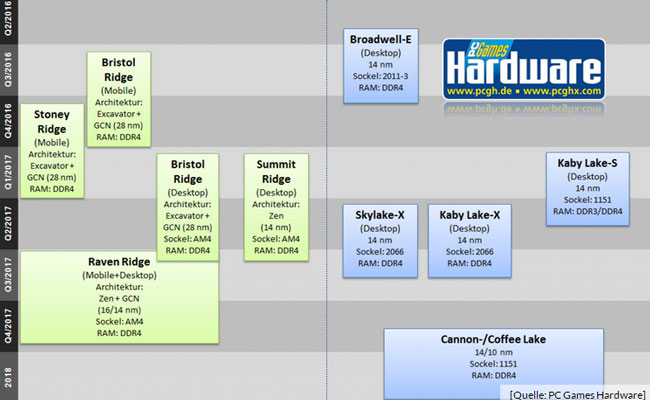
Image source PC Games Hardware
Let's start with AMD. At the beginning of the fourth quarter, laptops and all-in-ones based on AMD's 7th generation junior hybrid processors will enter the market under the code name Stoney Ridge. It's 28nm dual core processors(includes one core Excavator module) with GCN 1.2 graphics from 192 stream processors. Previously, in this category, AMD presented solutions based on the "cat" cores of Jaguar and younger. Now, AMD's junior APUs have received full-fledged computing cores from the company. The Stoney Ridge APU was announced at the beginning of the summer, but will only start appearing in commercial production now.
Desktop versions of the Bristol Ridge APUs (two Excavator modules or four cores and with GCN 1.2 graphics with 512 stream processors) will be released at the very beginning of 2017. At the same time, the commercial launch of Summit Ridge processors based on Zen cores/architecture will take place. Zen-core hybrid processors with next-generation graphics - Raven Ridge processors - can be expected from the beginning of the third quarter of 2017. desktop AMD platform, which is worth paying attention to, for 28-nm and 14-nm older and younger processors it will retain the same processor socket, which cannot be said about Intel desktop platforms.
As for Intel's plans, desktop processors promise to be the next novelties. Kaby Lake-S. They are expected at the beginning of the first quarter of 2017. By and large, these will be all the same processors based on the Skylake architecture. But in the second quarter, we can expect the appearance of productive Skylake-X models (up to 10 cores) and Kaby Lake X(4-core) for enthusiasts and connoisseurs of overclocking. Models in both lines will have an unlocked multiplier. True, enthusiasts will have to put up with the new processor socket: instead of LGA 2011, there will be LGA 2066.
Finally, in the fourth quarter of 2017, Intel will introduce mobile 10nm dual-core Cannonlake processors and mainstream 14nm desktop 6-core processors. coffee lake(Socket 1151). It should be understood that the above schedule for the release of processors will be constantly adjusted, which we will report in a timely manner.
SeptemberProfessional overclocker Der8auer reports successful overclocking of 18-core processor Intel Core i9 7980XE. Cooling with liquid nitrogen is one of the most expensive consumer CPU from Intel, it reached a clock speed of 6 GHz, resulting in a processor consuming an incredible 1000 watts.
In this case, overclocking was carried out with all active nuclei and removed cover CPU, so, apparently, the overclocker had several chips at his disposal.
Stable performance was achieved at 5.6 GHz (all cores). In this case, 5635 points were scored in the CineBench 15 test. At a voltage of 1.55 V, the processor worked at a frequency of 6.1 GHz, but it was not stable enough.
However, he still got some results in the tests. It is up to you to decide whether this result can be considered fair. Noteworthy power consumption, which reached 70 A at 5.5 GHz, which translates into 840 watts. At 5.7 GHz, the consumption increased to ... a kilowatt.
8-core processors on LGA1151 will have Coffee Lake architecture
SeptemberIntel plans to release a new 8-core processor based on the current 14 nm technology in the second half of 2018. It will belong to the Coffee Lake family. At least that's what the XTU error log says.
The most interesting information is contained in the changes section: "Added support for 8.2 cores", where CFL is the three-letter abbreviation for Coffee Lake, as KBL stands for Kaby Lake, and HSW for Haswell.
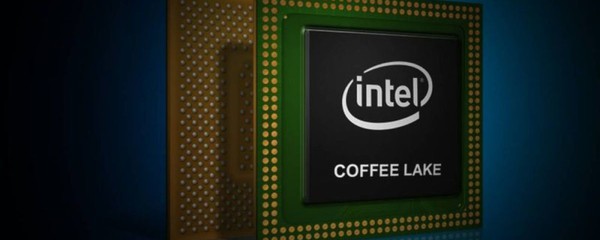
Also, this entry also talks about two directions in which Intel will develop the 8th generation of mainstream desktop processors. An 8-core/16-thread chip should be expected at the top of the row, while dual-core chips under the Pentium and Celeron brands will be located at the bottom of the row. Intel line MSDT will feature 6-core Core i5 and Core i7 models, as well as quad-core Core i3 models. The fastest Core i7 with 6 cores and 12 threads should appear in the second half of 2018.
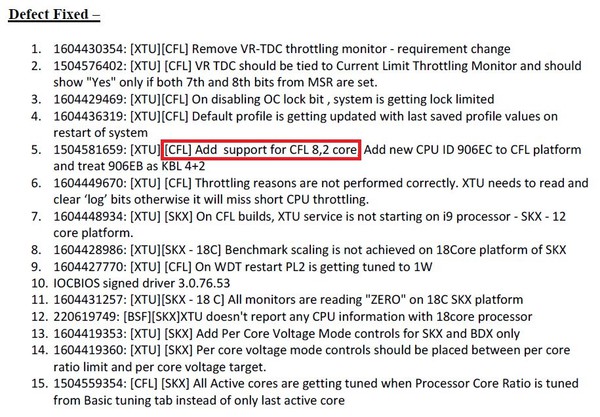
Intel will create a NUC based on Coffee Lake
SeptemberIntel plans to update its small NUCs with 14nm Coffee Lake processors that consume up to 28W under load.
This step is a big boost in power, as Kaby-based computers Lake Processors have a power of only 15 watts. This change in power should have a positive effect on PC performance.
Moreover, according to rumors, Intel is also preparing gaming NUCs. These models from the Skull Canyon series are finally getting level 4 cache on the base e-DRAM memory.
![]()
In the next generation of NUCs, developers will install different processors, from quad-core Core i3 to Core i7 with Hyper-threading. Now we are talking about the following models:
- Core i3 Processor (CFL-U) 4p/4p 28W;
- Core i5 Processor (CFL-U) 4p/8p 28W;
- Core i7 Processor (CFL-U) 4p/8p 28W.
New NUC models based on Coffee Lake U processors are already in development and will be available in the second quarter of 2018.
Sale of the famous tablet Jumper EZpad 6
SeptemberA good price / quality solution based on SOC architecture with a capacious battery and Windows 10 on board.
Tablet Jumper EZpad 6
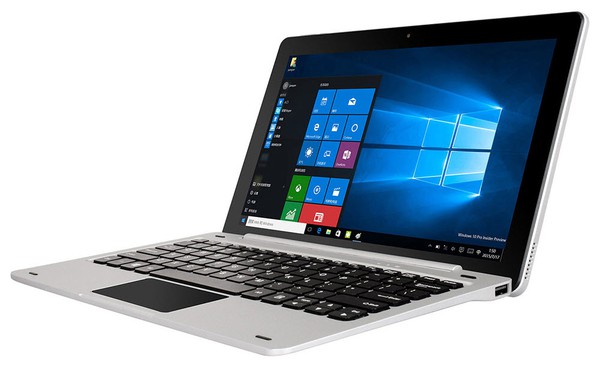 Device Specifications:
Device Specifications:
- CPU – Intel Cherry Trail Z8350 quad-core processor, 64-bit x86 architecture, 1.64 GHz (overclockable to 1.92 GHz);
- GPU Intel HD Graphic Gen8 with 12 cores;
- Memory: 4 GB DDR3 RAM + 64 GB onboard eMMC;
- licensed OS Windows 10 (64 bit) with office;
- IPS- 11.6-inch screen with a resolution of 1920 × 1200 pixels with 10-touch multi-touch (viewing angles of 178 degrees);
- Bluetooth 4.0 support;
- support WiFi 802.11b / g / n both bands - 2.4 and 5 GHz;
- support HDMI(microHDMI);
- MicroUSB (OTG) support for connecting a mouse, keyboard, projector and other devices;
- headphone output;
- front camera 2.0 MP;
- battery 7000 mAh;
- the presence of an accelerometer (G-sensor);
- docking interface for connecting a keyboard;
- weight is only 700 grams;
- device thickness - 6.5 mm;
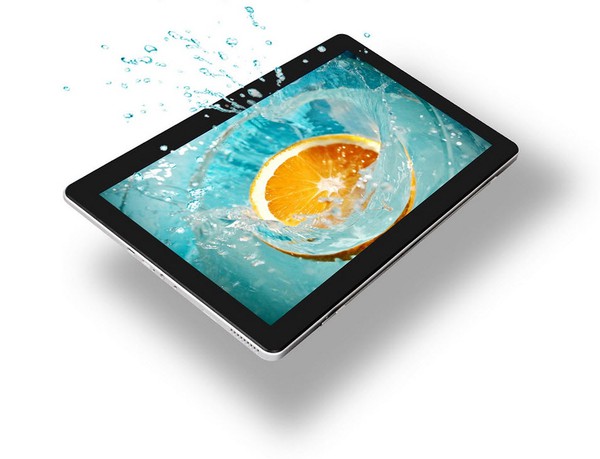
7994420702;horizontal
Ultrabook-transformer Gobook Y1102 with touch screen
SeptemberLlightInTheBox is offering free expedited shipping on its 11.6-inch convertible ultrabook (similar to Lenovo's popular Yoga).
GoBook Laptop Ultrabook
Guanben 11.6" Windows 10 Fully Expandable Computer touch screen and touchpad:
- highly efficient CPU Intel Cherry Trail Z8350 with four cores, 64-bit x86 architecture and a frequency of 1.44-1.92 GHz;
- graphic processor Intel HD 400 with a frequency of 500 MHz;
- 4 GB DDRL memory (up to 16 GB);
- licensed Windows 10 Home;
- IPS- 11.6-inch screen with a resolution of 1920 × 1080 pixels (FullHD), turning 360 degrees;
- built-in 64 GB eMMC drive;
- support for microSD cards up to 128 GB inclusive;
- Bluetooth 4.0 support;
- support WiFi 802.11b/g/n
- WLAN support;
- support HDMI(miniHDMI);
- two USB- ports 2.0 and 3.0;
- OTG support for USB ;
- front-camera 0.3 MP;
- battery 8000 mAh (lithium-ion);
- headphone jack;
- built-in microphone;
- device thickness - 17 mm;
- weight 1100 grams;
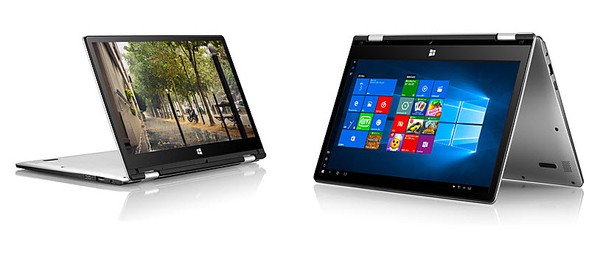
Kaby Lake processors are not compatible with Intel Z370
SeptemberIt has long been known that Coffee Lake processors will not be able to work in motherboards based on 300-series chipsets.
Some believed that the reason lies in the modified socket, but when they saw the first motherboard on the basis of the Z370, it became clear that the socket is exactly the same there. However, despite the same socket, old processors will not be able to work on new boards.
Many began to believe that it would be possible to carry out a phased upgrade, first replacing the motherboard with a 300 series, and then CPU on Coffee Lake, but it turned out that it was impossible to do so.
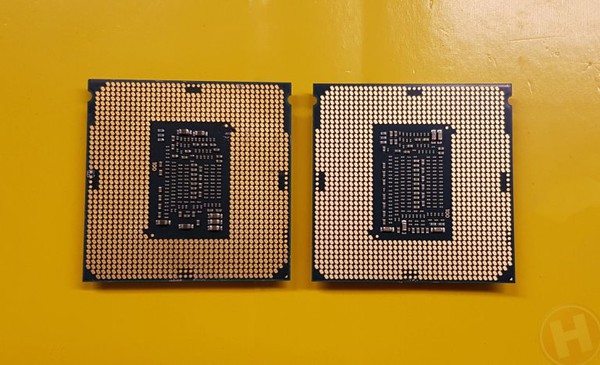
Platform compatibility has been tested by Hardware.info. As a result, Kaby Lake was found to be inoperable in boards based on the Z370 chipset. The system doesn't even go through POST. Just like the i7-8700K does not work in a motherboard with a Z270 chipset.
Probably, Intel made a number of changes to the architecture, which led to a complete lack of compatibility. However, there is a slim chance that support for older CPU is simply blocked, then in the future we can hope for the possibility of a phased upgrade and the use of Kaby Lake with 300-series chipsets.
Intel Launches Passively Cooled NUC Chassis
SeptemberIntel has announced new NUC chassis as alternative fanless solutions.
Formerly named Dawson Canyon, the new NUCs include low-powered 15-watt 7th generation Intel processors Core models i3 7100U (3MB, 2.4GHz) and Core i5 7300U (3MB, 3.5GHz) and are available as chassis or platform only. Dawson Canyon computers are industrial-grade solutions that offer TPM 2.0 and vPro technologies.
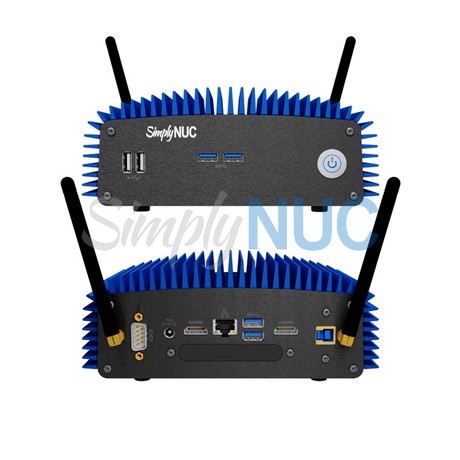
The platform is made in UCFF format (4”x4”) with soldered BGA package. It supports up to 32GB DDR4 2133 1.2V SO-DIMM (2 modules), up to 4 ports USB(two versions 3.0 and 2.0 each). There are also two full-size outputs. HDMI 2.0. The wired network is built on a 10/100/1000 Mb/s Intel i219-LM chip, and WiFi provided by Intel Wireless-AC 8265 (IEEE 802.11ac 2x2). The board has M.2 slots (PCIe x4: M.2 22x80 , PCIe x1: M.2 22x30 ) with support for Optane drives.
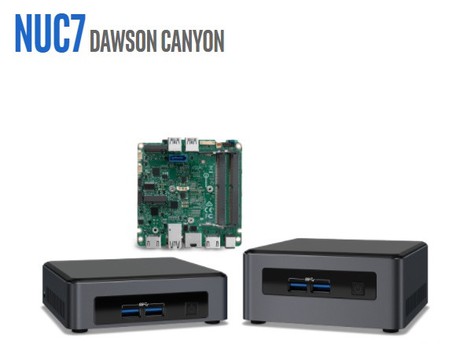
Completed Dawson Canyon NUC fanless solutions and standalone platforms should go on sale. We will probably also be able to buy separate chassis.
Intel abandons WiGig
SeptemberAnother technology added to Intel's long list of failures in recent years is WiGig, also known as 802.11ad.
The 802.11ad standard offered high performance- up to 4.8 Gb / s. This speed was achieved using a high data rate of 60 GHz. The disadvantages of the technology include the requirement of line of sight between the receiver and transmitter and short distance between them.
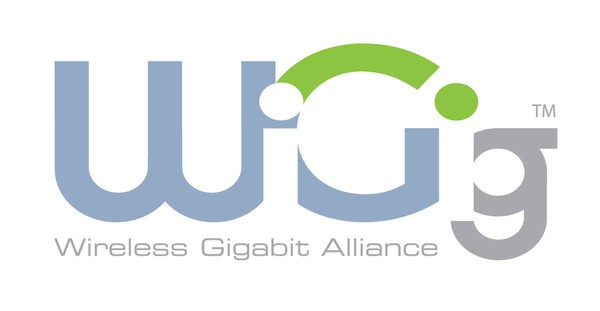
The technology was originally planned as a replacement network interface, despite the fact that it would require the placement of base stations in all corners of the room. However, it has an alternative use. The 802.11ad standard worked great as a replacement for cables. Several docking stations have appeared on the market, allowing you to connect laptops and monitors wirelessly. Also some helmet manufacturers virtual reality were interested in it, because the technology allows you to abandon the cables for connecting head units.
In any case, Intel is no longer working in this direction.
Intel Core i7-8700K performance tested
SeptemberReviewer Carl Morin was able to get his hands on an Intel Core i7-8700K CPU in an HP Omen PC, and ran Cinebench performance tests on the machine.
The as yet unreleased six-core and twelve-thread processor scored 1230 points in the benchmark in the multi-core test.
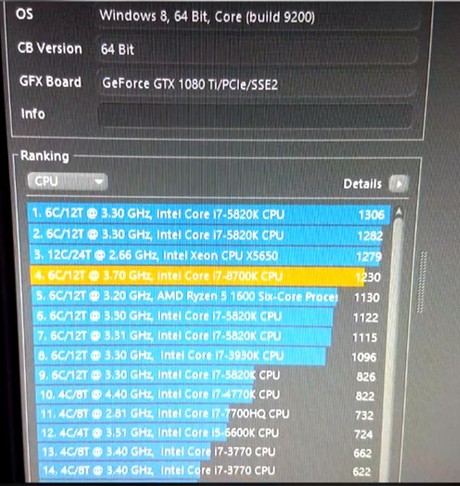
The reviewer got to the HP Omen PC at its presentation. He made several videos, but their quality leaves much to be desired. The fact is that at the presentation the computer was not even connected to the monitor, so he had to find another one and connect it. Having done this, he launched Cinebench.
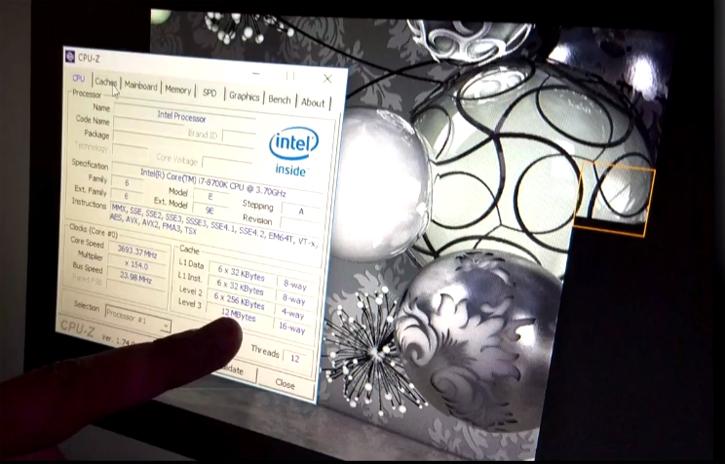
The Guru of 3D site not only reviewed the results of the multi-core test, but also compared them with other processors from its own base, so that you can understand the relative performance of the new CPU.
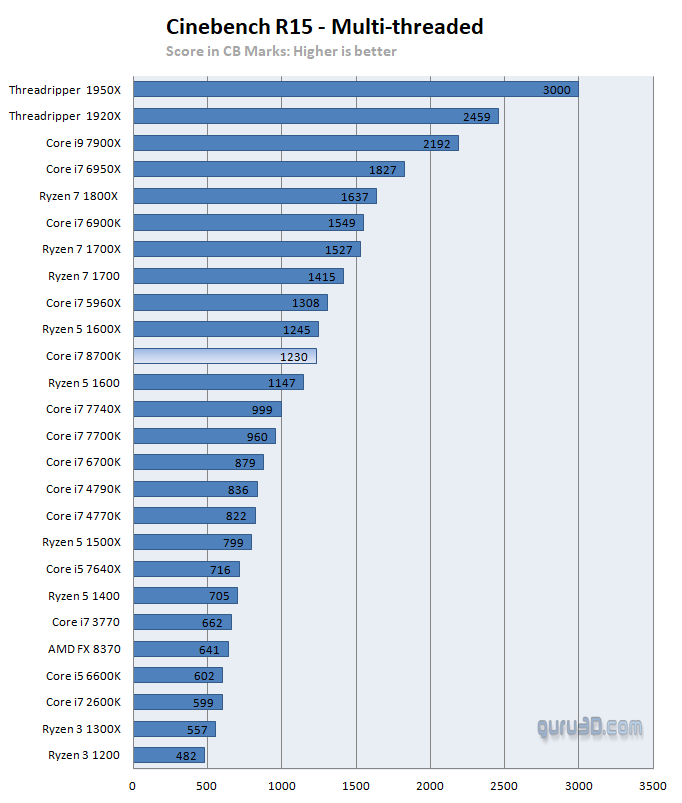
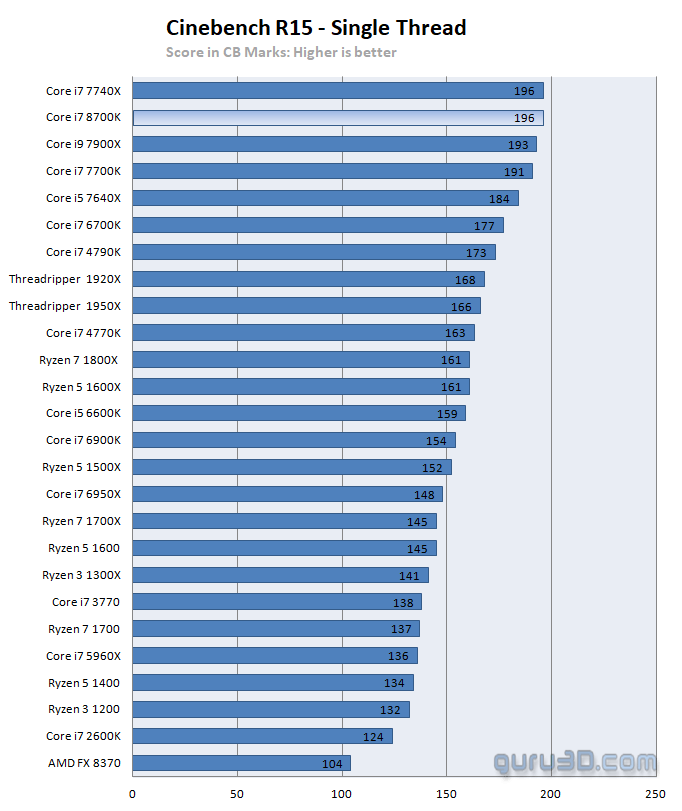
If the Omen test machine was configured correctly, then the performance of the Core i7-8700K can be considered final. According to the test results, its speed was between the Ryzen 5 1600 and 1600X.
In the single-threaded test, Intel has advantages, since the processor has Turbo 3.0 technology, which greatly increases the frequency in single-threaded calculations.
Intel is preparing a powerful Z390 Express chipset for 2018
SeptemberInformation about the future of the platform for Coffee Lake has appeared on the Web. It turned out that the Z370 chipset will not be the most productive.
For mainstream Intel platforms 8th Generation Core, Coffee Lake, the company is preparing the Z370 Express chipset, however, the company plans to prepare the Z390 Express chipset in the second half of 2018. This is evidenced by Intel's roadmap for the 300th series of chipsets.
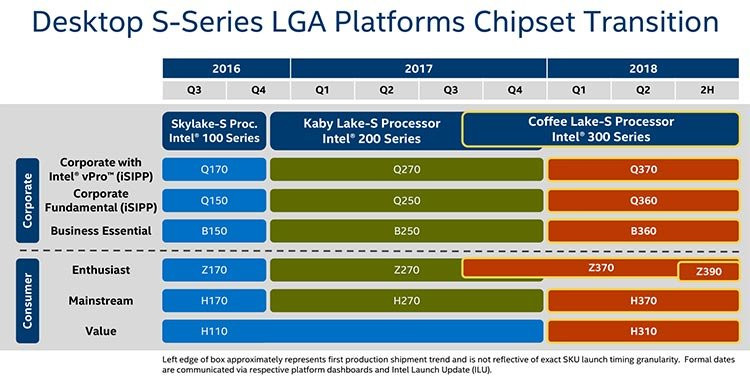
The Coffee Lake CPUs will be released in October along with the Z370 Express chipsets. Midrange chipsets, B360 Express and H370 Express, plus entry level, H310 Express, should arrive in the first quarter of 2018. In the same period, the company will release the Q370 and Q360 chipsets, designed for the corporate desktop market.
6-core Coffee Lake will be released on October 5
SeptemberPreviously, there were rumors on the Web that the new Intel Coffee Lake processors for the Z370 chipsets would be released on October 5th. Now these rumors have received another confirmation from a British online store.
A possible release date has been revealed thanks to a post by a Reddit user. According to the leaked screenshot, the 8th generation Core processors, known as Coffee Lake, will be based on the LGA1151 socket but will require a new chipset.
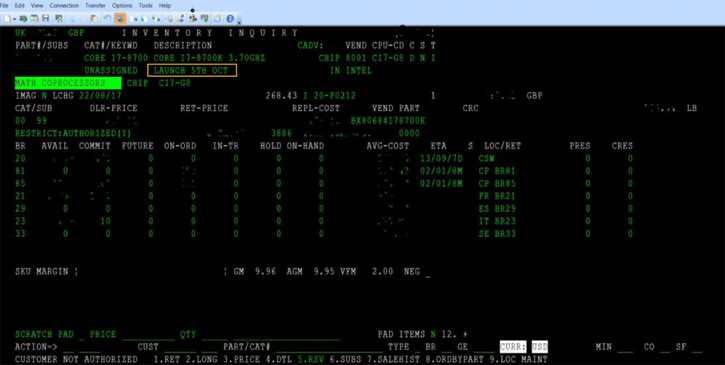
The thermal package of processors will be 65 W or 95 W. IN model range there will be two 6-core CPU with HT (12 MB cache) and two without HT (9 MB cache). The quad-core models (with 8MB L3 cache) won't get multithreading, which is also confirmed by early rumors. As for the frequencies, they are hard to make out in the screenshot, so for now we can only guess about them.
Frequency, GHz | Turbo (Single / Multi), GHz | L3 cache, MiB | Performance (Single / Multi) | |||||
| 11/51% to i7-7700K | ||||||||
| 18/58% to i7-7700 | ||||||||
| 19/55% to i5-7600K | ||||||||
| 29/61% to i5-7400 | ||||||||
| 17/65% to i3-7350K | ||||||||
| 16/61% to i3-7100K |
MediaTek has expanded its family of mobile processors by introducing a chip with the designation MT6739 for smartphones running operating system Android.
The product is designed primarily for low-cost devices with support cellular communication fourth generation. We are talking about support for VoLTE technology and Dual mode SIM Dual Standby (DSDS) in 4G+4G or 4G+3G configuration.
The processor contains four 64-bit ARM Cortex-A53 cores with clock frequency up to 1.5 GHz. Up to 3 GB allowed random access memory LPDDR3-667 and eMMC 5.1 flash module.
The graphics component relies on the IMG PowerVR GE8100 controller with a frequency of 570 MHz. We are talking about support for touch screens with a resolution of up to 1440 × 720 pixels.
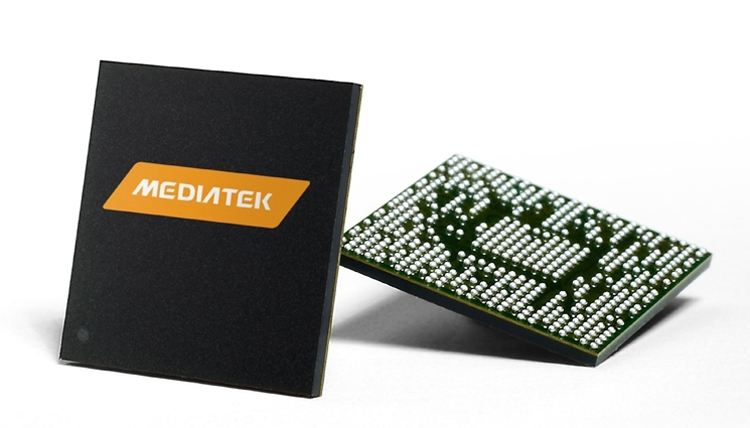
The chip makes it possible to use the main camera with a resolution of up to 13 million pixels or dual camera based on sensors with 8 million and 0.3 million pixels.
Declared support for Wi-Fi 802.11a / b / g / n and Bluetooth 4.2, FM radio and GPS / GLONASS. The integrated LTE modem provides data download speeds up to 150 Mbps and data transfer rates up to 50 Mbps towards the base station.
Expected that mobile devices on the MediaTek MT6739 platform will debut before the end of this year.
Source:
Source:
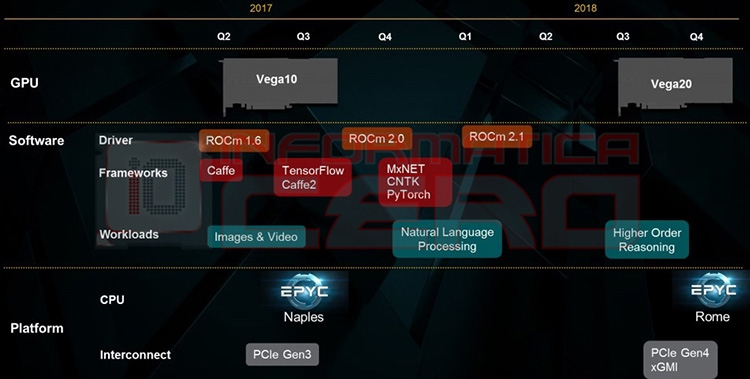
Another slide obtained by the Informatica Cero resource illustrates the advantage of an older mobile AMD processor Ryzen 5 Pro series (Raven Ridge) over Core i5/Kaby Lake competitor. According to Sunnyvale, these chips have the same idle power consumption figures, and, more importantly, Ryzen 5 Pro outperforms the rival in both Cinebench and 3DMark 11.
And everything would be fine, only deep learning requires a preliminary massive exchange of information with the database, which is either very difficult or simply impossible to implement in an operational environment. I would like robots and AI to be more smart, to think like a person, relying on associative thinking. This desire gave rise to attempts to embody in silicon a similarity human brain, where electronic circuits would imitate the work of neurons and synapses.
IN modern history a more or less complex embodiment of the "human brain" in silicon was created by IBM engineers. In 2011, the company introduced the processor and later evolved the architecture to a 4096-core processor with one million digital neurons and 256 million programmable digital synapses. Last spring, the company shipped the industry's first National Nuclear Security Administration "cognitive" computer based on 16 28nm TrueNorth processors. Interestingly, the announcement of IBM TrueNorth in 2011 made Intel think about neuromorphic processors.

Today Intel. It turns out that the company started developing a proprietary neuromorphic processor six years ago. The embodiment of many years of development was a solution codenamed Loihi (most likely we are talking about the largest underwater volcano in the United States - Loihi). The Loihi processor will be manufactured using a 14nm process and will ship to academic institutions in the first half of 2018.
According to Intel, Loihi combines learning, training, and decision making on a single chip, allowing the system to be autonomous and "smart" without being connected to the cloud (database). For example, Intel claims that when trained with the MNIST (Mixed National Institute of Standards and Technology) database, the Loihi neuromorphic processor is 1 million times better than other typical spiked neural networks. At the same time, if we compare Loihi with conventional convolutional neural networks, Intel's development uses much fewer resources during training, and these are communication channels, consumption, and decision speed. Intel also claims that Loihi learns 1000 times more efficiently than conventional computer systems general purpose.
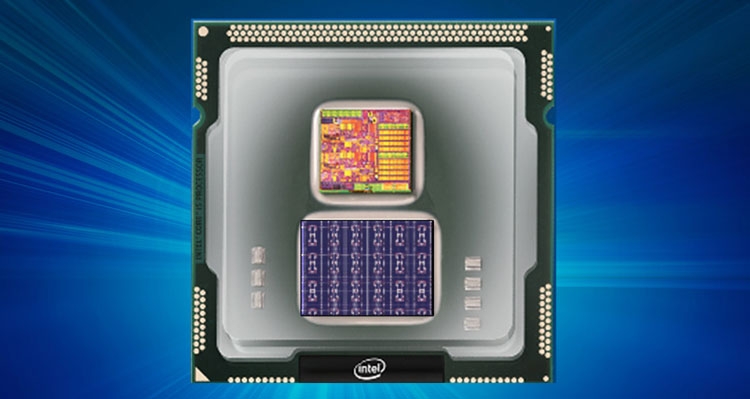
Unfortunately, the company did not pay enough attention to the description of Loihi's technical specifications. Briefly, Loihi is a multi-core solution with an internal mesh network. Loihi cores are neuromorphic asynchronous (each of them can work independently of the others). The mesh network has several degrees of sparseness, it is hierarchical and supports a recurrent neural network topology, where each neuron can interact with thousands of other neurons.
Also, each neuromorphic core includes a learning mechanism (engine) that can be programmed to adapt the network during operation. If we translate the composition of the Intel Loihi processor to the capabilities of the human brain, then the solution includes 130,000 neurons and 130 million synapses. Intel processor Loihi isn't as smart as the IBM TrueNorth processor, but it's definitely more efficient from a 14nm manufacturing standpoint.




